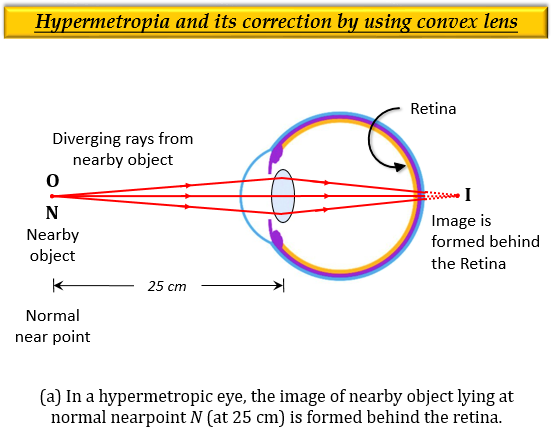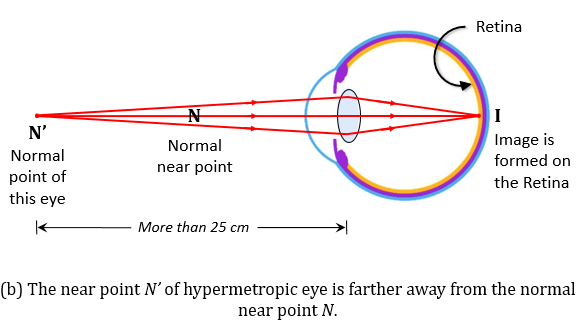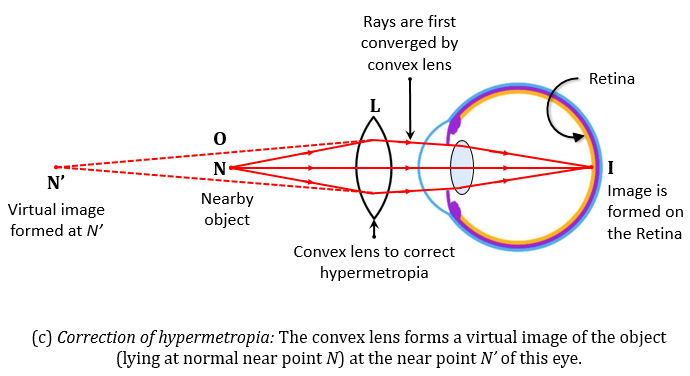
 Data Structure
Data Structure Networking
Networking RDBMS
RDBMS Operating System
Operating System Java
Java MS Excel
MS Excel iOS
iOS HTML
HTML CSS
CSS Android
Android Python
Python C Programming
C Programming C++
C++ C#
C# MongoDB
MongoDB MySQL
MySQL Javascript
Javascript PHP
PHPPhysics
Chemistry
Biology
Mathematics
English
Economics
Psychology
Social Studies
Fashion Studies
Legal Studies
- Selected Reading
- UPSC IAS Exams Notes
- Developer's Best Practices
- Questions and Answers
- Effective Resume Writing
- HR Interview Questions
- Computer Glossary
- Who is Who
After testing the eyes of a child, the optician has prescribed the following lenses for his spectacles:Left eye : + 2.00 D Right eye : + 2.25 DThe child is suffering from the defect of vision called:(a) short-sightedness (b) long-sightedness(c) cataract (d) presbyopia
(b) long-sightedness
Explanation
Here, the lens power prescribed by the optician for both the eye has a plus sign $(+)$ which implies that it's a convex lens.
We know that a convex lens is used to correct the defect of vision called long-sightedness or hypermetropia in which a person can't see the nearby object clearly (appears blurred), though can see the distant objects clearly.
Therefore, the child needs convex lenses (or, converging lenses) in his spectacles, which first converges the diverging light rays coming from the nearby object to form a virtual image at the eye's near point. Then the eye lens easily focuses the rays from the eye's near point to form a clear image on the retina.
This defect occurs either due to the low converging power of the eye lens, (because of its large focal length). Or, due to the eye-ball being too short, which causes light to focus beyond the retina, instead of directly on the retina.
It is corrected by using spectacles containing convex lenses, which should be of such a focal length (or power) that it forms a virtual image of the object (lying at the normal near point N of 25 cm, as the near point of a hypermetropic eye is more than 25 cm away) at the near point 'N' of the hypermetropic eye.




